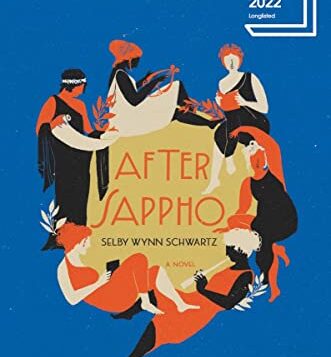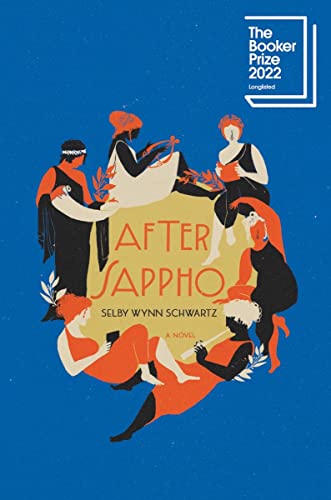ACCORDING TO Selby Wynn Schwartz, the day of the Amazon is here! Writing a Sapphic, feminist novel takes imagination and nerve, and it’s worth noting that this author feels the need to confess that she’s bisexual, as if being 100 percent lesbian feminist is too dangerous for any woman in these times. But this confession does not undermine Schwartz’ imagined and historical Sapphic fantasy. Her experimental novel is a philosophical portrait of woman as creator. The novel’s homocentric text digresses, entangles, and slides down a rabbit hole into the lives of queer women from the 18th through the 20th centuries. Inspired by Virginia Woolf’s novel Orlando, After Sappho forces the question of female creativity in literature and art: is it equal in originality to male creativity?
Schwartz’ female heroes exist in twilight zones where nonconforming women find their creative voices and speak their truths. In using fictionalized real-life women as characters who voice the contradictions of living a lesbian life in a heteronormative, binary, patriarchal society and culture, these embodied voices courageously critique the misogyny and sexual politics at play in undervaluing women’s creativity. Schwartz’ novel moves us forward through time from the 1800s, in Italy, where a baby is born who will grow up to be Italian poet Lena Poletti, whose first act of rebellion is kicking off her swaddling blanket. Poletti takes a leading role in the charge for women’s liberation, and she’s Schwartz’ most important literary discovery—a constantly shifting visionary who apparently seduced most of the great women of her age.
We are then swiftly transported to 1920s Paris and London. Here we meet Natalie Barney, Romaine Brooks, Sarah Bernhardt, Isadora Duncan, Nancy Cunard, Gertrude Stein, and Radclyffe Hall. The fragments in Schwartz’ narrative are discreet but cumulative: plays performed, love affairs begun and broken off, and babies left behind. History brutally invades the characters’ lives, promising political progress only to revoke it frustratingly. Feminism as a movement is born, and lesbianism is recognized and then condemned: “we still lived in a little hollow between laws.” The unrivaled French-Jewish master of the novel form, Marcel Proust—who inspired Virginia Woolf, Gertrude Stein, and so many other literary lights—is very much alive in the author’s free-flowing tribute to Sapphic creativity as it moves through the ages.
Nevertheless, readers unfamiliar with the heroic characters in Schwartz’ narrative may feel a little lost. After Sappho is not for casual readers or those looking for an entertaining afternoon. Unless one is familiar with the historical Sappho and the novel’s numerous references to lesbian, Sapphic, and sexually fluid women throughout history, the novel will most likely not be an easy read. The quotations of classical Greek philosophy, theater, and dance, and the various Latin quotations, tend to be in the original language, and the references to creative women stretch from Sappho through the 20th century. But readers who have the erudition or patience to wade through will be rewarded with all the lovely, wanton variations of human sexuality that the heteronormative, binary world tries to ignore.
The fact is that lesbians have never had the freedom to explore their sexuality in the ways that gay males have throughout history. Gay women have never been free to roam the streets and bars in sexist America or anywhere else. Even so, lesbian sexuality today is quite different from what might have been considered hot and juicy in the past. After Sappho demonstrates that Sapphic love has undergone numerous transformations over the centuries. ____________________________________________________
Cassandra Langer is the author of Romaine Brooks: A Life.






